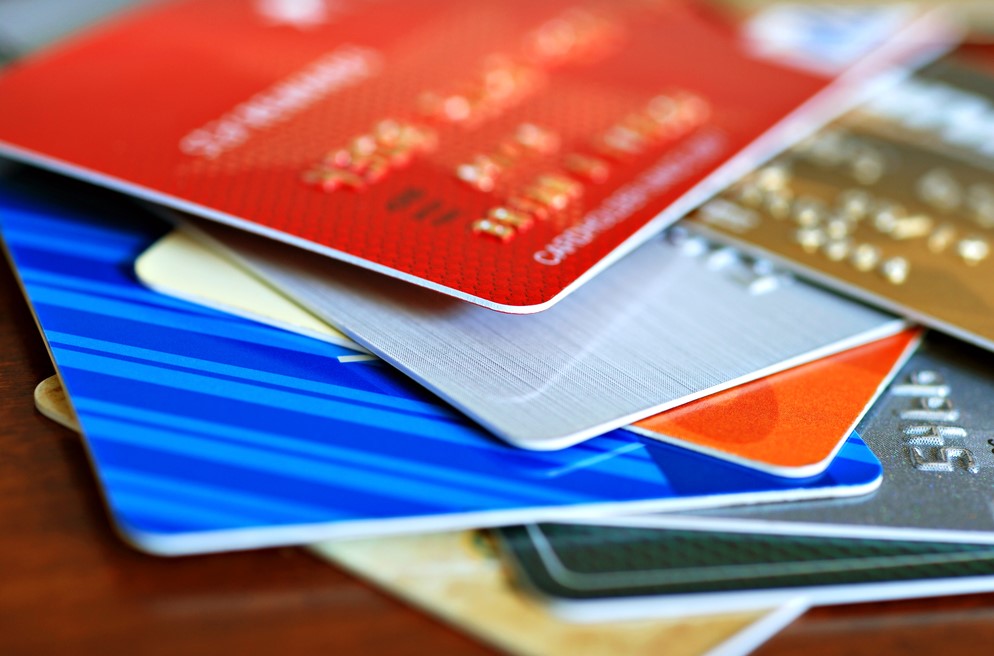In the digital age, online financial fraud has become a distressing norm, with millions of Americans impacted each year. The Federal Trade Commission reported a staggering amount of financial losses due to various forms of online fraud, signaling a growing need for vigilance and protective measures among consumers and businesses alike. Among the myriad threats lurking in the cyber shadows, one notorious name often emerges: Briansclub.
Briansclub is infamously known in the cybersecurity community as a major player in the underground market of credit card fraud. This illicit operation specializes in the buying and selling of stolen credit card information, posing a significant risk to personal financial security. The operation of Briansclub and entities like it, highlight an urgent call to action for everyone from individual consumers to large corporations—to fortify their defenses and remain ever-vigilant against the tide of online financial threats.
Understanding the mechanics, risks, and the pervasive impact of Briansclub is not just about recognizing a name; it’s about equipping oneself with the knowledge to prevent falling victim to such nefarious activities. As we delve deeper into the world of online financial fraud, it becomes crucial to adopt proactive measures to safeguard our financial identities and ensure our private information remains just that—private. In this article, we will explore how Briansclub operates, the signs that your information might be compromised, and effective strategies to protect yourself against such invasive threats.
Table of Contents
ToggleWhat is Briansclub?
Briansclub is an infamous online marketplace, but far from the conventional e-commerce platforms that most are familiar with. This website operates in the shadows of the internet, specifically designed as a hub for cybercriminals to buy and sell stolen credit card information. The operation is part of a broader landscape of “carding shops,” which are unauthorized websites that traffic in credit card data pilfered from unsuspecting individuals around the world.
Historical Context and Its Role in Credit Card Fraud
The emergence of Briansclub can be traced back to the rise of cybercrime networks that exploit the increasing reliance on digital payment systems. Over the years, Briansclub became synonymous with credit card fraud due to its high-profile breaches and the volume of data it managed to accumulate and distribute. By hacking into retail systems or utilizing skimming devices and phishing attacks, cybercriminals gather credit card details and other personal information, which are then sold on platforms like Briansclub. The site not only facilitates these transactions but also ranks sellers based on their reliability, further institutionalizing credit card fraud as a business model.
Impact on Consumers and Businesses
For consumers, the impact of Briansclub and similar operations is direct and devastating. Stolen credit card information leads to unauthorized purchases, damage to credit scores, and significant personal financial loss. The process of recovering from identity theft can be lengthy and complex, adding stress and inconvenience to the financial damage.
Businesses, on the other hand, face indirect yet substantial repercussions. They suffer from diminished customer trust, potential legal consequences, and financial losses associated with reimbursements for fraudulent transactions. Moreover, businesses often need to invest in upgraded security measures to protect against future attacks, which can be costly. Additionally, the widespread availability of stolen data on platforms like Briansclub fuels further fraudulent activities across the industry, perpetuating a cycle of crime and prevention.
How Does Briansclub Operate?
Briansclub operates as a clandestine marketplace, functioning through mechanisms that facilitate the anonymous exchange of stolen credit card details among cybercriminals. This operation is a complex ecosystem that thrives on secrecy and the exploitation of digital payment systems.
Operation Mechanisms
The primary service offered by Briansclub is the sale of stolen credit card information. The website operates on the dark web, accessible only through specific software that anonymizes user identities and locations, such as Tor. This layer of anonymity is crucial for both the operators of Briansclub and its users, as it shields their activities from law enforcement detection. Once on the site, buyers can browse through lists of available credit card information, which typically includes data like the card number, expiration date, CVV, and sometimes additional details such as the cardholder’s name and address.
Types of Data Available on Such Platforms
Briansclub and similar platforms categorize the available credit card data based on various factors, including the country of issue, the credit limit, and the bank issuing the card. This data is often sold in batches known as “dumps,” which may include information from hundreds or even thousands of stolen cards. More sophisticated data packages might also contain fullz, a term used in the underworld for comprehensive records that include full names, addresses, social security numbers, and other personal information, enabling more extensive identity theft.
The Process from Data Theft to Data Sale
The journey of stolen credit card information from the point of theft to its sale on Briansclub involves several steps:
- Data Theft: Cybercriminals steal data through various means, including phishing attacks, malware, or breaching payment systems directly.
- Data Collection: The stolen data is collected and organized by the cybercriminals, who may verify the validity of the credit card details by making small online transactions.
- Data Sale: Once verified, the data is uploaded to Briansclub, where it’s made available for purchase. The site typically operates on a system of credits or bitcoin for transactions, maintaining anonymity.
- Purchase and Use: Other criminals purchase the data and may use the credit card details to make fraudulent purchases or to clone credit cards.
Legal and Financial Risks Associated with Briansclub
The involvement with illicit sites like Briansclub, either as a buyer or seller of stolen data, carries significant legal and financial risks. Understanding these risks can underscore the importance of steering clear of such dangerous engagements.
Legal Repercussions for Involvement with Sites Like Briansclub
Engaging with sites like Briansclub exposes individuals to severe legal consequences. In the United States and many other jurisdictions, participating in the trade of stolen information, such as credit card details, is a criminal offense. Those caught buying, selling, or even possessing this information can face charges including identity theft, computer fraud, and conspiracy to commit fraud. Convictions may lead to heavy fines, restitution payments, and substantial prison time. For instance, under U.S. federal law, wire fraud and identity theft can lead to sentences of up to 20 years and 15 years in prison, respectively. Law enforcement agencies worldwide are increasingly focused on cybercrime, improving their techniques to track transactions and identities on the dark web, which raises the likelihood of apprehension and prosecution.
Financial Risks for Consumers Whose Credit Card Information is Stolen
For consumers, the theft of credit card information often results in immediate financial loss. Unauthorized charges can drain bank accounts and max out credit limits, affecting victims’ financial stability and credit standing. Recovering stolen funds can be a lengthy and complicated process, involving disputes with financial institutions and potentially lengthy investigations. Beyond immediate losses, victims may also face longer-term consequences, such as damage to their credit scores and increased insurance premiums. Additionally, the time and effort required to resolve fraud issues, including securing new cards, changing account numbers, and repairing credit history, can be substantial.
Statistics on Losses Incurred Annually Due to Credit Card Fraud
Credit card fraud is a massive and growing problem, reflecting the increasing sophistication of cybercriminals. According to a report by Nilson, global losses from credit card fraud totaled around $28.65 billion in 2019 and are projected to rise to $40 billion by 2027. In the United States alone, the Federal Trade Commission reported over 393,000 cases of credit card fraud in 2020, highlighting the widespread impact of this type of cybercrime. These statistics illustrate the enormous economic burden posed by credit card fraud on individuals, businesses, and the economy at large.
Signs Your Credit Card Information Might Be Compromised
Identifying early signs of credit card fraud can help mitigate damage and simplify recovery processes. Knowing what to look for is essential in taking prompt action.
Common Indicators of Credit Card Fraud
Several red flags may indicate that your credit card information has been compromised:
- Unfamiliar Transactions: Small, unauthorized transactions often appear first, as thieves test the validity of account details before making larger purchases.
- Alerts from Your Financial Institution: Many banks and credit card companies monitor for suspicious activity and will alert you to potential fraud.
- Declined Transactions: If your card is declined and you know it should be in good standing, it may be a sign that fraudulent activity has been detected.
- Changes in Account Statements: Receiving no statements or notices that your statements have been sent to a new email address can indicate a hijacking of your account.
- Multiple Charges for the Same Purchase: Seeing duplicate transactions can be a sign that your card information is being used fraudulently.
Steps to Take If You Suspect Your Information Has Been Compromised
If you notice any signs that your credit card information might be compromised, immediate action can help limit the damage:
- Contact Your Credit Card Issuer: Inform your bank or credit card company about the suspicious activity to put a hold on your card and discuss next steps.
- Review Your Credit Card Statements: Go through recent transactions to identify any further unauthorized activity.
- Change Your Online Account Passwords: Update your passwords for online banking and shopping sites where your credit card is used.
- Report the Fraud: File a report with the Federal Trade Commission (FTC) through IdentityTheft.gov or contact your local law enforcement.
- Check Your Credit Reports: Monitor your credit reports from the three major credit bureaus (Experian, TransUnion, Equifax) for any unauthorized accounts or changes.
Importance of Regular Credit Monitoring
Regular monitoring of your credit activity is a crucial preventative measure against credit card fraud. Here’s why it’s essential:
- Early Detection: Regular monitoring helps you spot unauthorized activities before they escalate into more significant problems.
- Maintaining Good Credit: Quickly addressing fraud can prevent negative impacts on your credit score, which is vital for future financial opportunities.
- Personal Security: Staying informed about your credit status empowers you to maintain control over your personal and financial information.
Preventative Measures to Protect Your Credit Card Information
Safeguarding your financial information in an increasingly digital world is paramount to preventing credit card fraud. By adopting best practices and utilizing the right tools and services, you can significantly reduce your vulnerability to cybercriminals.
Best Practices for Safeguarding Personal Financial Information
- Use Secure Networks: Always access your financial information over secure, private networks. Avoid public Wi-Fi for transactions or accessing bank accounts.
- Enable Alerts: Set up transaction alerts with your bank to receive immediate notifications of any charges to your account, allowing you to respond quickly to unauthorized activity.
- Secure Physical Documents: Shred documents containing personal information before disposal and store important documents like bank statements in a secure place.
Tips on Creating Strong Passwords, Secure Online Shopping Habits, and Regular Credit Checks
- Strong Passwords: Create complex and unique passwords for each financial account. Use a mix of letters, numbers, and special characters, and consider using a reputable password manager to keep track of them.
- Secure Online Shopping: Shop only on secure websites (look for HTTPS in the URL), and consider using virtual or disposable credit card numbers for online purchases to avoid exposing your actual account number.
- Regular Credit Checks: Regularly review your credit reports from the three major credit bureaus—Equifax, Experian, and TransUnion. You’re entitled to a free report from each bureau once per year through AnnualCreditReport.com, which can help you spot any discrepancies or unauthorized accounts.
Tools and Services for Credit Monitoring and Fraud Protection
Several tools and services can enhance your protection against credit card fraud:
- Credit Monitoring Services: These services keep continuous watch over your credit reports and alert you to any changes, such as new accounts or changes in your credit score. Examples include services from credit bureaus and third-party providers like LifeLock or Identity Guard.
- Fraud Alerts: Place a fraud alert on your credit reports if you suspect you’ve been a victim of fraud. This makes it harder for identity thieves to open accounts in your name, as creditors will need to take extra steps to verify your identity.
- Credit Freeze: Consider placing a credit freeze on your reports, which prevents creditors from accessing your credit report entirely. This is an effective way to prevent new accounts from being opened in your name, though it does not affect your credit score or prevent charges to existing accounts.
The Role of Financial Institutions in Preventing Credit Card Fraud
Financial institutions play a crucial role in combating credit card fraud. Banks and credit card companies have implemented a range of strategies and technologies to mitigate risks and protect consumers from the damaging effects of cybercrimes like those perpetrated through platforms such as Briansclub.
How Banks and Credit Card Companies Are Fighting Back Against Platforms Like Briansclub
Banks and credit card companies are constantly enhancing their cybersecurity protocols to detect and prevent fraudulent activities. They use sophisticated algorithms to monitor transactions in real time, flagging those that deviate from a customer’s typical spending patterns. If suspicious activity is detected, the transaction can be halted, and the card may be temporarily frozen until the activity can be verified with the cardholder.
Innovations in Technology and Security Measures Being Adopted
Financial institutions are increasingly leveraging cutting-edge technologies to fortify their defenses against credit card fraud:
- Two-Factor Authentication (2FA): Many banks now require two-factor authentication for online and mobile transactions. This adds an additional layer of security by requiring a second form of verification (such as a code sent to the customer’s phone) in addition to the password.
- Artificial Intelligence and Machine Learning: AI and machine learning are being used to analyze transaction data in vast quantities, learning from trends to quickly identify anomalies that may indicate fraud. This technology can adapt and respond to emerging threats more quickly than manual monitoring.
- Behavioral Biometrics: Some institutions are implementing behavioral biometrics, which analyze patterns in user behavior such as typing speed, mouse movements, and even walking patterns when using mobile banking apps, to identify if a legitimate user is conducting the transaction.
Cooperative Measures Between Financial Institutions and Law Enforcement
To further enhance efforts in combating fraud, financial institutions often collaborate with law enforcement agencies:
- Sharing Information: Banks and credit card companies share information about fraud trends and specific incidents with law enforcement agencies to help track down cybercriminals.
- Joint Task Forces: Some countries have established joint task forces that include financial institutions, cybersecurity experts, and law enforcement to work together in developing strategies to combat financial cybercrimes.
- Training and Workshops: Many financial institutions participate in training programs and workshops to stay updated on the latest cybercrime tactics and preventive technologies.
Conclusion
The threats posed by Briansclub and similar illicit entities underscore a critical and ongoing challenge in the digital age—protecting personal financial information from increasingly sophisticated cybercriminals. Throughout this discussion, we’ve explored how Briansclub operates, the significant legal and financial risks associated with such platforms, the telltale signs of credit card fraud, and robust preventative measures that can be employed by individuals and supported by financial institutions.
Recap of the Dangers Posed by Briansclub and Similar Entities
Briansclub represents a formidable aspect of the broader landscape of online financial fraud, specializing in the sale and distribution of stolen credit card information. This not only affects individuals, whose financial stability and credit standing can be severely compromised, but also impacts businesses and the economy at large due to the extensive measures needed to combat such fraud.
Final Tips on Staying Vigilant and Proactive in Protecting Personal Financial Information
- Monitor Your Financial Statements Regularly: Keep a close eye on your bank and credit card statements. Quick detection of any unauthorized activity can be the key to minimizing damage.
- Utilize Security Features Offered by Financial Institutions: Take full advantage of tools like fraud alerts, credit freezes, and monitoring services to enhance the security of your financial information.
- Educate Yourself and Others: Stay informed about the latest in cybersecurity and share this knowledge with friends and family. Awareness is a powerful tool in the fight against fraud.
Encouragement to Report Suspicious Activities to Authorities
It is vital to report any suspicious activity to the authorities immediately. Whether it’s a strange charge on your credit card or an unsolicited request for your financial information, reporting these incidents can help law enforcement track down and stop cybercriminals. Agencies like the Federal Trade Commission (FTC) in the U.S. provide resources and support for reporting and dealing with cases of identity theft and fraud.







